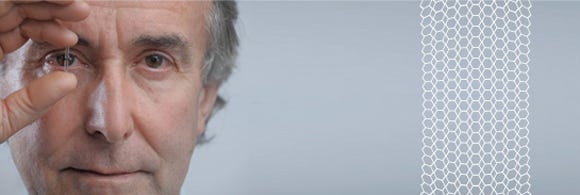March 7, 2016
Julio Palmaz, MD, changed interventional cardiology with his invention of the balloon-expandable stent in the 1980s. But he was unable to recreate the magic with medical device surface technologies company Palmaz Scientific, which has filed for Chapter 11 amid what it describes as a "negative campaign of false information."
Chris Newmarker
|
Julio Palmaz, as shown on Palmaz Scientific's website (Image courtesy of Palmaz Scientific) |
Palmaz Scientific (San Antonio, TX)--founded by legendary medtech inventor Julio Palmaz, MD, in 2008--is filing for Chapter 11 bankruptcy protection as it seeks to sell off the advanced metallurgical surface nanotechnologies it has been developing.
The company has been embroiled in litigation after some investors accused Palmaz and others of fraud and civil theft last year, according to the San Antonio Express-News. They demanded to know where their money had gone. A federal grand jury investigation related to the matter resulted in no charges, according to a letter from the U.S. Attorney's Office in Dallas that the company shared.
In the last year alone, Palmaz and his family spent millions of dollars to preserve and further develop Palmaz Scientific's technology and to identify strategic partners, according to the company.
Palmaz Scientific has 256 U.S. and international patents, as well as 182 active U.S. and international patents pending, involving thin-film technologies and physical vapor deposition process innovations, according to a declaration filed with its bankruptcy motion. The company sought to commercialize "advanced metallurgical surface nanotechnologies for the manufacture of implantable medical devices with superior design and biocompatibility," according to its website.
But the company failed to raise sufficient funds in a November 2015 private placement.
"While potential suitors have expressed great praise for the technology, the company believes that the toxic atmosphere created by the defamation and the related litigation prevented any meaningful investment," the company said in a statement last Friday. "The Chapter 11 proceeding presents an opportunity to separate the valuable technology from the collateral effects of the defamation and litigation. The company intends to market the technology and maximize its value."
Palmaz Scientific is listed as having $10 million to $50 million in assets and $10 million to $50 million in liabilities in its Chapter 11 filing. Its creditors, in the 50 to 99 range, include the state of Texas, which provided the company a $3 million emerging technology grant with conditions in 2010.
The company has laid off 10 of its 17 employees. The CEO Phillippe Marco resigned in February, and chief financial officer John Asel resigned March 4. The following day, all of the directors including Palmaz stepped down, except for Eugene Sprague, who is staying on as sole director and designated representative to sheppard the company through bankruptcy.
Qmed recently included Palmaz in a roundup of the greatest medical device inventors of all time. The Argentine-born cardiologist invented the balloon-expandable stent and earned a patent for the invention, which he filed in 1985. His invention, which he codeveloped with Richard Schatz, MD, would later save the lives of countless heart disease patients and be included in the Smithsonian Institution in Washington, D.C.
Palmaz's contributions also paved the way for TAVR and minimally invasive valve replacement. On a lighter note, his Wikipedia entry notes that he created an entirely gravity-operated wine cave in Napa Valley, called Palmaz Vineyards.
The Palmaz Scientific bankruptcy comes about six months after another company started by a medtech pioneer, Kips Bay Medical, dissolved. St. Jude Medical founder Manny Villafaña had started Kips Bay in 2007, right when the Great Recession was ramping up. The straw that broke the camel's back for Kips Bay was a disappointing clinical trial of its mesh "sleeve" meant to aid in in coronary artery bypass graft surgery.
Learn more about cutting-edge medical devices at BIOMEDevice Boston, April 13-14, 2016. |
Chris Newmarker is senior editor of Qmed and MPMN. Follow him on Twitter at @newmarker.
Like what you're reading? Subscribe to our daily e-newsletter.
About the Author(s)
You May Also Like



